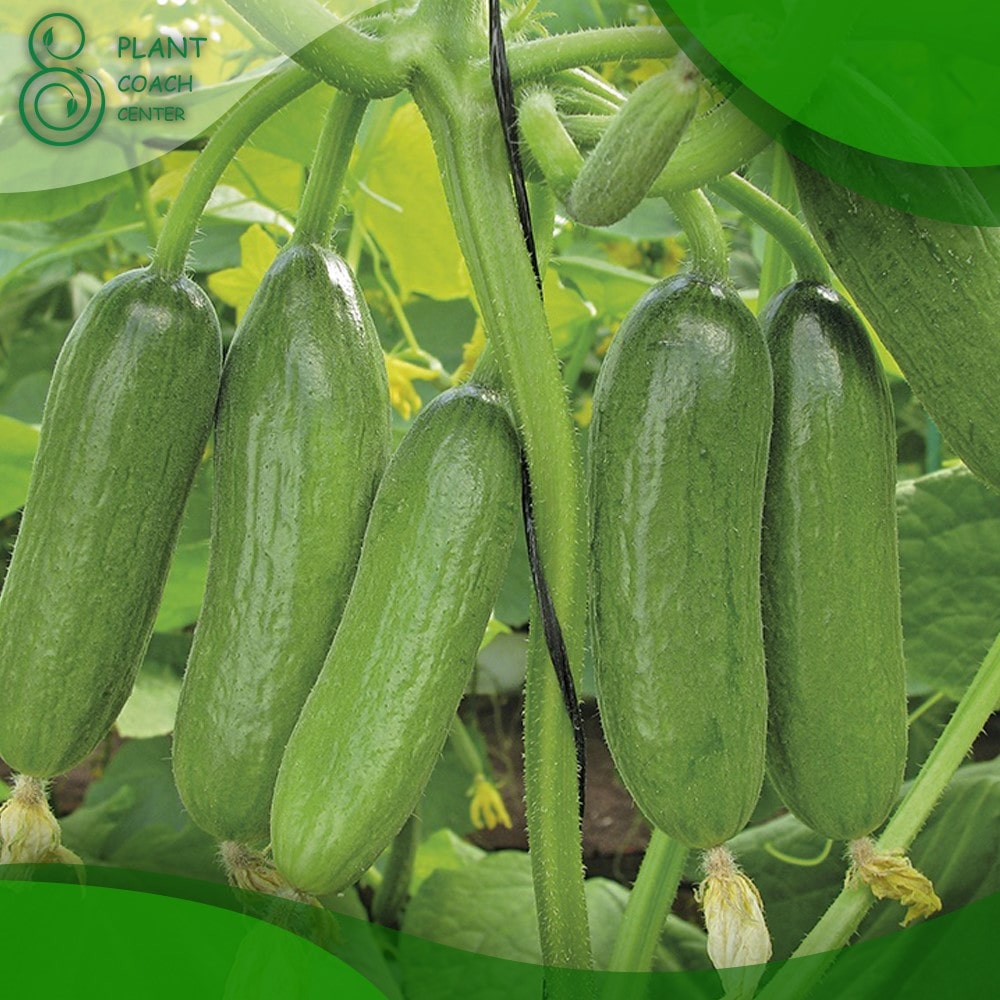When to Plant Out Cucumbers
Cucumbers are delightful and refreshing additions to any garden. Knowing the ideal time to plant them is crucial for a successful harvest.
In this comprehensive guide, we will explore the various aspects of cucumber planting, covering topics such as cucumber growth and development, determining the ideal planting time, seasonal considerations, choosing the right cucumber variety, plant care, harvesting, and post-harvest handling. Whether you’re a novice gardener or an experienced plant enthusiast, this article will provide you with valuable insights to help you maximize your cucumber yields.

Understanding Cucumber Growth and Development
Cucumbers undergo a fascinating life cycle, from seed germination to fruit production. To ensure healthy growth, it’s essential to understand the factors that influence their development.
Life Cycle of a Cucumber Plant
Cucumber plants progress through several stages, each with unique requirements:
- Seed germination: The journey begins with the emergence of a seedling.
- Vegetative growth: The plant develops leaves, stems, and roots.
- Flowering: Cucumber flowers appear, and pollination occurs.
- Fruit development: Tiny cucumbers form and grow into mature fruits.
Factors Affecting Cucumber Growth
Several factors impact cucumber growth and development:
– Temperature: Cucumbers thrive in warm temperatures between 70°F and 95°F (21°C to 35°C).
– Light: Cucumbers require full sun exposure for optimal growth.
– Water and moisture: Adequate and consistent watering is crucial for healthy cucumber plants.
– Nutrients: Soil fertility, organic matter, and balanced fertilization contribute to robust growth.
Optimal Environmental Conditions for Cucumber Growth
Creating the right environment for cucumbers is vital for their success:
– Temperature considerations: Wait until all danger of frost has passed before planting cucumbers outside.
– Soil conditions: Cucumbers prefer well-draining soil with a pH range of 6.0 to 7.0.
– Sunlight requirements: Choose a sunny location with at least 6 to 8 hours of direct sunlight daily.
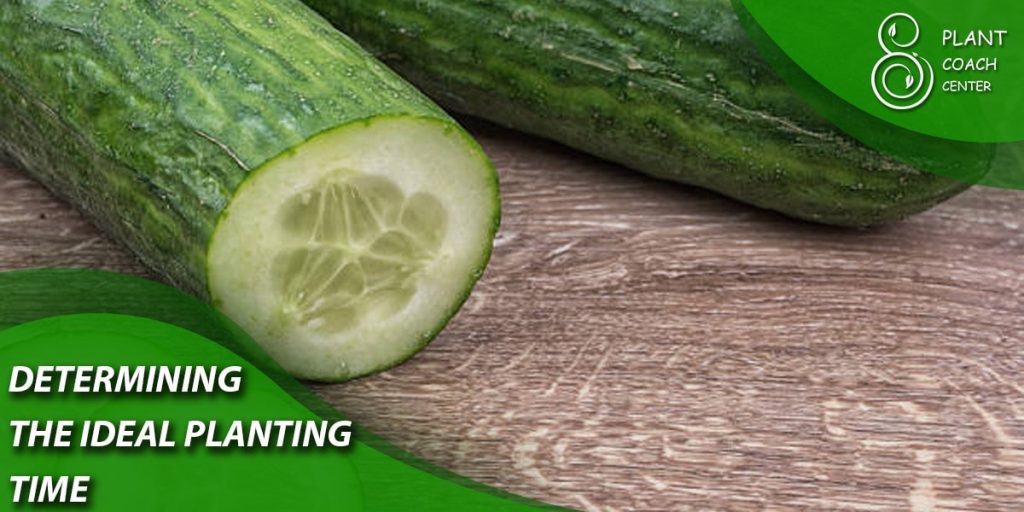
Determining the Ideal Planting Time
The timing of cucumber planting plays a significant role in ensuring healthy growth and abundant yields. Several factors, such as climate and soil conditions, should be considered.
Climate Considerations for Cucumber Planting
Understanding your local climate is crucial when deciding when to plant cucumbers:
– Temperature requirements: Cucumbers are sensitive to cold temperatures. Wait until the soil has warmed to at least 60°F (15°C) before planting.
– Frost considerations: Cucumbers are susceptible to frost damage. Plant them outdoors after the last frost date in your area.
– Regional variations: Different regions have unique climate conditions. Check your local agricultural extension office or consult resources specific to your area.
Soil Conditions for Successful Cucumber Planting
Optimizing soil conditions is essential for healthy cucumber growth:
– Soil temperature and moisture: Cucumbers thrive in warm soil. Ensure the soil temperature is consistently above 60°F (15°C) before planting. Additionally, maintain adequate soil moisture throughout the growing season.
– Soil fertility and pH levels: Conduct a soil test to determine the nutrient composition and pH of your soil. Cucumbers prefer fertile soil with balanced nutrients and a slightly acidic to neutral pH.
Soil Preparation Techniques
Preparing the soil properly creates an ideal environment for cucumber plants:
– Clear the area: Remove any weeds, rocks, or debris from the planting site.
– Loosen the soil: Use a garden fork or tiller to break up compacted soil and improve drainage.
– Add organic matter: Incorporate compost or well-rotted manure to enhance soil fertility and moisture retention.
Seasonal Considerations and Planting Methods
The timing of cucumber planting varies depending on the season and the preferred planting method. Let’s explore the different approaches for each season.
Spring Planting
Spring is an ideal time to start planting cucumbers. Consider the following methods:
– Starting seeds indoors: Begin cucumber seeds indoors 3 to 4 weeks before the last frost date. Use seed trays or pots filled with seed-starting mix. Transplant the seedlings outdoors once all frost danger has passed.
– Transplanting seedlings: If you’ve started cucumber seeds indoors, transplant the seedlings into the garden after hardening them off. Harden off by gradually exposing the seedlings to outdoor conditions over 7 to 10 days.
– Direct seeding in the garden: Wait until the soil has warmed and all frost danger has passed. Plant cucumber seeds directly in the garden, sowing them at the appropriate depth specified on the seed packet.
Summer Planting
Summer planting offers its own set of considerations to ensure cucumber success:
– Sowing seeds directly in the garden: If you missed the spring planting window, sow cucumber seeds directly in the garden once the soil has warmed. Choose faster-maturing varieties to ensure a harvest before the end of the growing season.
– Supporting cucumber vines in hot weather: Cucumber vines benefit from trellising or providing support to keep the fruits off the ground and improve airflow, especially in hot climates.
– Managing pests and diseases during summer: Regularly monitor your cucumber plants for common pests like cucumber beetles and diseases such as powdery mildew. Employ appropriate organic or integrated pest management strategies to protect your crop.
Fall Planting
Fall planting allows you to extend the cucumber growing season and enjoy a late harvest:
– Extending the cucumber growing season: Start fall plantings 10 to 12 weeks before the first expected frost date in your region.
– Protecting plants from frost: As the growing season nears its end, protect cucumber plants from potential frost by covering them with row covers or using other frost protection methods.
– Harvesting cucumbers in the fall: Monitor the weather closely and harvest cucumbers before the first frost. Harvested cucumbers can be enjoyed fresh or preserved for later use.
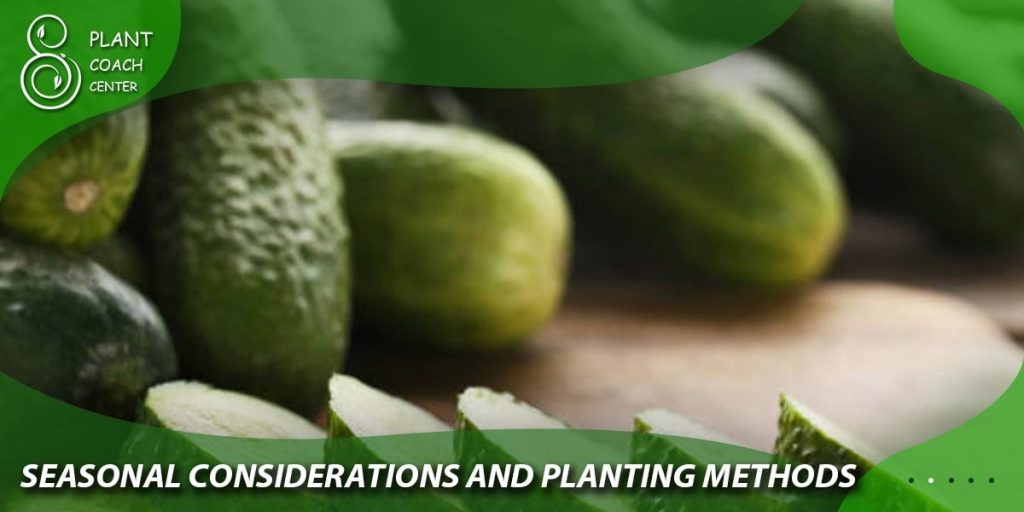
Choosing the Right Cucumber Variety
Selecting the appropriate cucumber variety is essential for a successful harvest. Consider the following factors:
Understanding Cucumber Types
Cucumbers come in various types, including slicing, pickling, and specialty cucumbers:
– Slicing cucumbers: These cucumbers are ideal for fresh consumption and salads, with crisp texture and mild flavor.
– Pickling cucumbers: These cucumbers are specifically bred for pickling due to their smaller size, thin skin, and firmness.
– Specialty cucumbers: Specialty varieties include burpless cucumbers, seedless cucumbers, and heirloom varieties, each with unique characteristics.
Considering Disease Resistance and Regional Suitability
Look for cucumber varieties with resistance to common diseases prevalent in your area. Disease-resistant varieties can significantly reduce the risk of crop loss and the need for chemical interventions.
Evaluating Growth Habits: Bush Cucumbers vs. Vining Cucumbers
Consider the growth habits of cucumber varieties:
– Bush cucumbers: These compact varieties are well-suited for containers or small gardens, requiring less space and support.
– Vining cucumbers: These varieties produce longer vines and require trellising or ample space for their climbing growth habit.
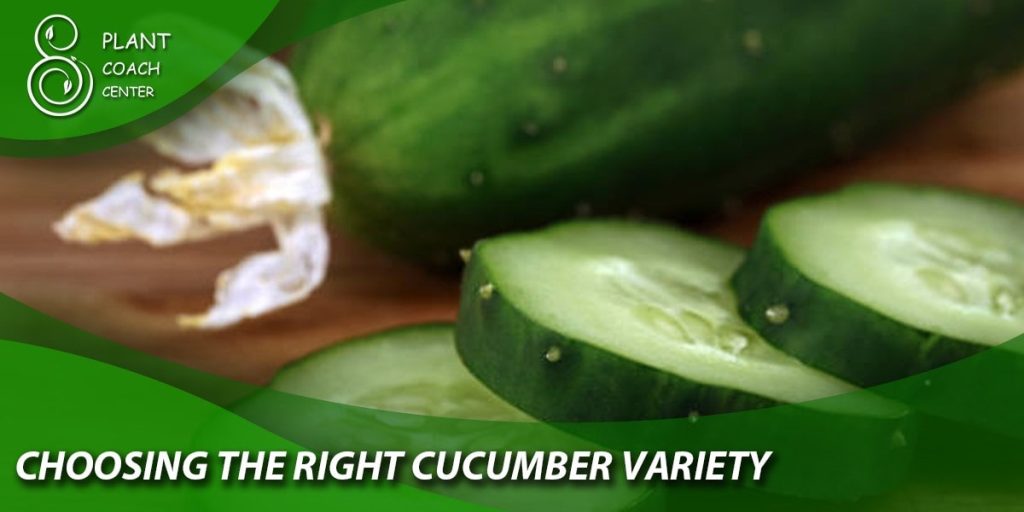
Mastering Cucumber Plant Care
Proper care is essential for healthy cucumber plants and a bountiful harvest. Pay attention to watering, fertilizing, pest and disease management, support techniques, mulching, and weed control.
Providing Proper Water Requirements
Cucumbers have high water requirements to support their vigorous growth:
– Watering frequency: Cucumbers need consistent moisture. Water deeply, providing 1 to 1.5 inches of water per week. Adjust watering during hot and dry periods.
– Irrigation methods: Use drip irrigation or soaker hoses to deliver water directly to the root zone, minimizing moisture on the foliage.
Fertilizing Cucumbers for Optimal Growth
Proper fertilization ensures healthy cucumber plants and abundant yields:
– Soil testing: Conduct a soil test to determine nutrient deficiencies. Follow the recommendations to amend the soil accordingly.
– Balanced fertilization: Apply a balanced fertilizer, such as a granular 10-10-10, before planting. Side-dress with additional fertilizer during the growing season.
Managing Pests and Diseases Affecting Cucumbers
Pests and diseases can pose challenges to cucumber plants. Implement integrated pest management strategies and disease prevention techniques:
– Common pests: Monitor for cucumber beetles, aphids, and spider mites. Consider using organic pest control methods, like neem oil or insecticidal soaps.
– Diseases: Watch for common cucumber diseases such as powdery mildew, downy mildew, and bacterial wilt. Choose disease-resistant varieties and practice crop rotation to minimize disease incidence.
Supporting Cucumber Vines: Trellising and Pruning Techniques
Supporting cucumber vines promotes better air circulation, reduces disease risk, and enhances fruit quality:
– Trellising: Install trellises, stakes, or cages to support cucumber vines vertically. Train the vines to climb the support structure as they grow.
– Pruning: Regularly remove excessive foliage and lateral shoots to improve airflow and reduce overcrowding.
Mulching and Weed Control in Cucumber Beds
Mulching and weed control contribute to healthier cucumber plants and easier maintenance:
– Mulching benefits: Apply organic mulch, such as straw or shredded leaves, around cucumber plants. Mulch conserves soil moisture, regulates temperature, and suppresses weed growth.
– Weed management: Regularly remove weeds around cucumber plants to prevent competition for nutrients and water.
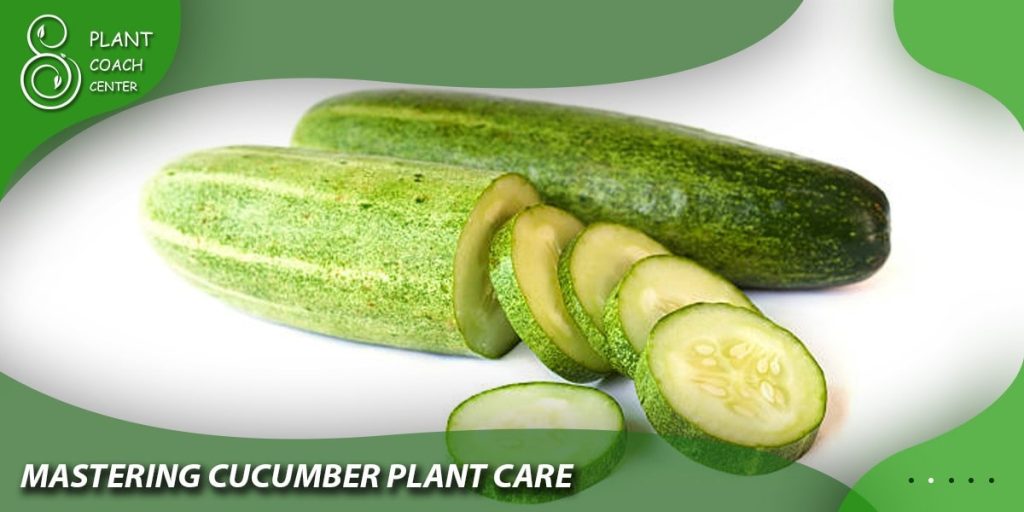
Harvesting and Post-Harvest Handling
Knowing when and how to harvest cucumbers ensures peak flavor and quality. Proper post-harvest handling increases their shelf life.
Determining Cucumber Ripeness
Cucumbers are best harvested at the right stage of ripeness for optimal flavor and texture:
– Slicing cucumbers: Harvest when they reach 6 to 8 inches in length and have a firm texture.
– Pickling cucumbers: Harvest pickling cucumbers when they are 2 to 4 inches long and have a crisp texture.
Harvesting Techniques for Different Cucumber Varieties
Different cucumber varieties require specific harvesting techniques:
– Slicing cucumbers: Use a sharp knife or garden shears to cut the cucumber from the vine, leaving a short stem attached.
– Pickling cucumbers: Gently twist or snap pickling cucumbers off the vine. Avoid pulling, as it can damage the plant.
Proper Storage and Handling of Harvested Cucumbers
Take care of harvested cucumbers to maintain their freshness and extend their shelf life:
– Washing: Rinse cucumbers with cool water to remove any dirt or debris before storage.
– Storage conditions: Store cucumbers in the refrigerator to maintain their crispness. Use them within a week for the best quality.
Utilizing Surplus Cucumbers: Pickling and Preserving
If you have an abundance of cucumbers, consider preserving techniques to enjoy them throughout the year:
– Pickling: Explore various pickling recipes and methods to create delicious homemade pickles.
– Freezing: Slice or dice cucumbers for freezing, ensuring they are blanched before storage.
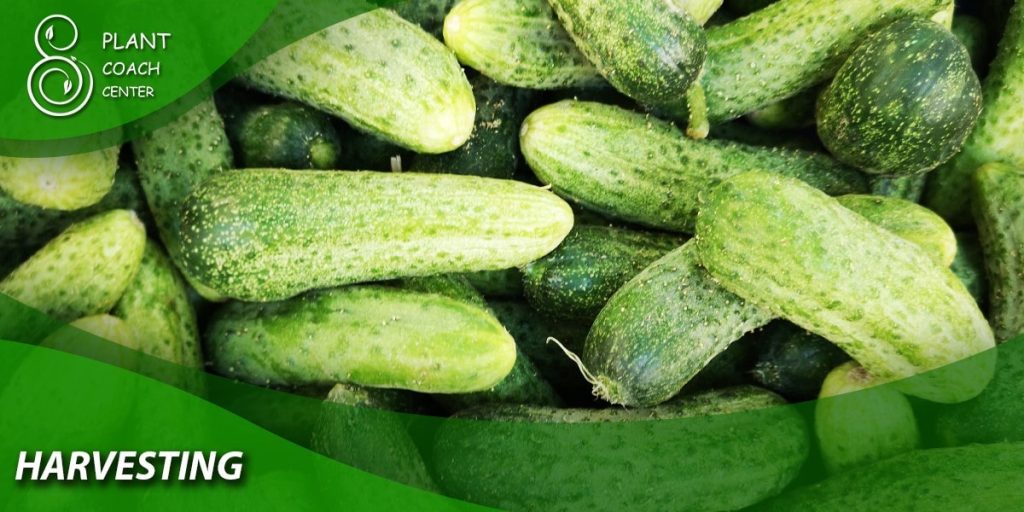
Conclusion
Understanding the optimal timing for planting cucumbers is essential for a successful harvest. By considering factors such as climate, soil conditions, and cucumber variety, you can maximize your cucumber yields. Remember to provide proper care, manage pests and diseases, and harvest cucumbers at their peak.
With the knowledge gained from this comprehensive guide, you’ll be well-equipped to grow and enjoy an abundant cucumber harvest. For further information and resources on plant care, visit plantcoachcenter.com—a valuable hub for all your plant-related queries and guidance. Happy cucumber gardening!


